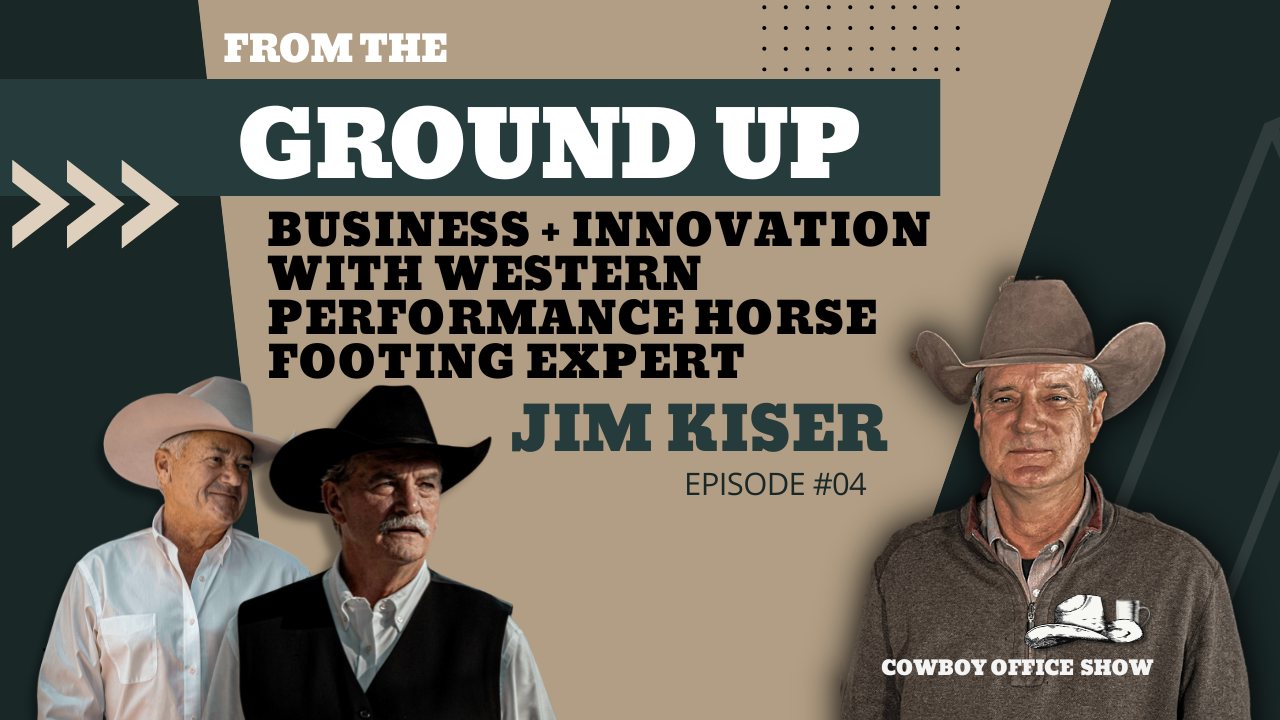Jim Kiser was recently featured on the Cowboy Office Podcast. In this episode, Jim Kiser joins host Brian Dygert, Jody Brainard, and moderator Chelsea Sutton of ConsultMent to discuss the evolution of footing in the horse show industry and how the Kiser brand came to be.
Listen to the podcast on Youtube for yourself, but here are some highlights from the podcast.
Note: The interview script below has been edited for readability.
Who is Jim Kiser?
Chelsea: Jim Kiser is a five-time open futurity finalist, a former NRHA judge, and an owner and operator of a multigenerational brand now known as Kiser Ranch Development. Jim also manages ground for some of the world’s most prestigious working western events, such as the NRHA Derby and Futurity, NCHA Superstakes, AQHA World Championships, Cowhorse Snafflebit Futurity, World’s Greatest Horseman, four out of five of the World Equestrian Games, and more. He is also NRHA number 64, for those wondering.
Why is arena ground so important?
Jody: The Kiser team has taken care of our riding arena ground for so long that many up-and-coming riders have no idea what we used to have to show our horses in. Riders today take it for granted at riding events because the Kiser team has been in charge of it for so long. When I grew up, we would say “good ground, good reining,” and before the Kiser team, we had a lot of bad reining shows because the ground was awful.
Brian: I think arena ground is one of the two key pillars that the NRHA was so profound in being ahead of their time. Ground quality and officiating are two big things that have revolutionized the modern horse show. In years past, we would talk about how bad the ground was. Today, we talk about how good the ground is because there is no tolerance for bad ground.
How did Kiser and NRHA get started?
Jim: When the NRHA Futurity moved to Oklahoma City in ’86, it faced serious ground challenges. I think Linda Matthews was the executive director then. They got my dad, Bob Kiser, involved in ’87. That’s really kind of where it started. I don’t think (by today’s standards) the ground ever got good that year, but at least we could use it.
Then in ’88, it was one of those things that they looked up and said, “Well, you helped us last year; would you help us again?” I’ve never quite understood why Dad undertook the task. It was an unpaid position. There is criticism beyond belief of everything that goes with it. But we’d been involved at that point in the reining horse industry for a while, and Dad had done other things in the reining industry.
Dad had been a President of the Illinois Reining Horse Association and different things, so he enjoyed contributing to the industry. And at that point, the reining horse industry was so small that we were all good friends. Mom was great friends with Kay Potts, another reining industry legend and an ’89 NRHA Hall of Fame inductee.
I believe one of the first things Dad realized was that he didn’t have any equipment. I don’t remember that first drag; I’m sure it was pretty crude. The drag was made from whatever was sitting in the maintenance yard at the Futurity.
Dad got home after the Futurity in ’88 and decided that he was going to build a drag. He used that drag the next year in ’89.
I remember being around five years old and Dad going down to the maintenance yard in the middle of the night and cutting the arena drag apart, thinking, “Okay, I need to add this; I’m going to make it better. I’m going to change this on it.” From there, the drag Dad made kept evolving. He also started trying to figure out how to make the ground better.
There are a lot of times when I look up and think, “Why would somebody have undertaken that task?” He didn’t have any help. He was basically the only one there driving the tractor. There were a lot of nights that he’d sleep in the judge’s room on the couch and wake up about every two hours to go drag the arena. At the end of the futurity, I can remember him being so physically exhausted that it was kind of scary.
Today, we’re still evolving the design of the drags just like Dad, and I did years ago.
To listen to the rest of the podcast, click below.
Stay Social with Kiser Ranch Development


